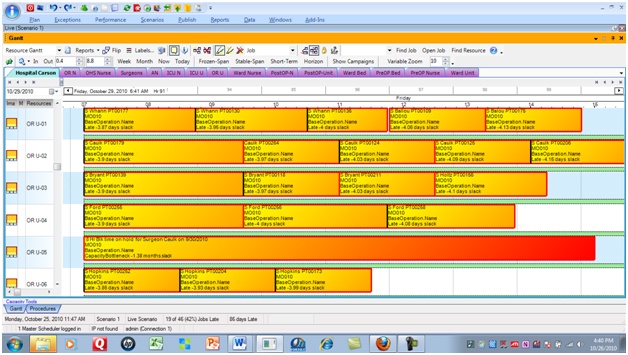Six Sigma pertains to the data approach utilized by companies to upgrade business processes. The method utilizes a five-stop methodology to eliminate defects at all stages within a company. Six Sigma defines defects as anything that is not within customer expectations and that is considered wasteful within a manufacturing operation.

Six Sigma correlates with the process of lean, which pertains to removing waste within an operation as well as cutting costs and improving profitability. The entire goal behind lean six sigma is to apply a measurement-based approach that primarily focuses on identification and improvement of defects within an operation.
Benefits of Six Sigma
Six Sigma allows you to add value and ensure quality within your overall operation. Adding value and ensuring the quality of value is by far one of the most important components when attempting to differentiate yourself from the competition and get a step ahead. It may also be utilized to optimize supply chain processes and increase customer satisfaction. The benefits of utilizing Six Sigma will go beyond simple-problem solving and considering the entire production process from raw materials to the end product as opposed to only the end product.
Disadvantages of Six Sigma
Six Sigma is able to inspect the business minute-by-minute and generate large quantities of empirical data leading to time-consuming and complicated procedures. Since Six Sigma pertains to quality improvement and is a quality improvement process at its root, adoption of its protocols often leads to an increase in the overall costs. There are times when a company implements Six Sigma and there will be problems that arise as the company focuses on Six Sigma endorsed policies only and forgets about its specific mission statement or policies. For small business, it may also constrain new ideas favoring creativity and innovation, which requires some risk to implement.
Five Steps of the Six Sigma Process
The most important process and steps within the Six Sigma process pertain to the acronym: DMAIC. This process is essential to understand when utilizing the Six Sigma process.
- Define: The first and initial phase of the Six Sigma process pertains to the define stage. The team initiating a high-level view of company processes to gauge client needs and define a problem or an area that needs improvement.
- Measurement: The second stage pertains to the accumulation of data, which is critical during the life of the project. Initially, the team maps out the current process to determine a baseline and looks for what is causing problems. Throughout the project, it charts possible improvements empirically.
- Analysis: The third stage is analysis, which is continual as the team analyzes the data and focuses on the cause of a problem.
- Improvement: The fourth phase is improvement. This is the solution-development phase in which the team implements a solution and verifies it performs as expected.
- Control: The fifth and final phase entails control, which here is where the focus is on maintaining the solution and progress the team as accomplished.
A process that can aid with the implementation of Lean Six Sigma is Advanced Planning and Scheduling (APS) Software. APS Software is a cutting edge technology system that enables manufacturers to have thorough insight into their overall operation and improve their operation through bottleneck elimination and process improvement. APS can easily be integrated into manufacturing operations that are seeking to enhance efficiency within their operation and ultimately cut costs and improve profitability. APS is also compatible with various ERP, MRP, and MPS software around the globe. APS is essential for manufacturers that are seeking to maintain a competitive advantage and get ahead within their industry.
Advanced Planning and Scheduling Software
Advanced Planning and Scheduling (APS) software has become a must for modern-day manufacturing operations due to customer demand for increased product mix and fast delivery combined with downward cost pressures. APS can be quickly integrated with a ERP/MRP software to fill gaps where these system lack planning and scheduling flexibility and accuracy. Advanced Planning and Scheduling (APS) helps planners save time while providing greater agility in updating ever-changing priorities, production schedules, and inventory plans.
- Create optimized schedules balancing production efficiency and delivery performance
- Maximize output on bottleneck resources to increase revenue
- Synchronize supply with demand to reduce inventories
- Provide company-wide visibility to capacity
- Enable scenario data-driven decision making
Implementation of Advanced Planning and Scheduling (APS) software will take your manufacturing operations to the next level of production efficiency, taking advantage of the operational data you already have in your ERP.
Related Capacity Planning Video
APS Resources